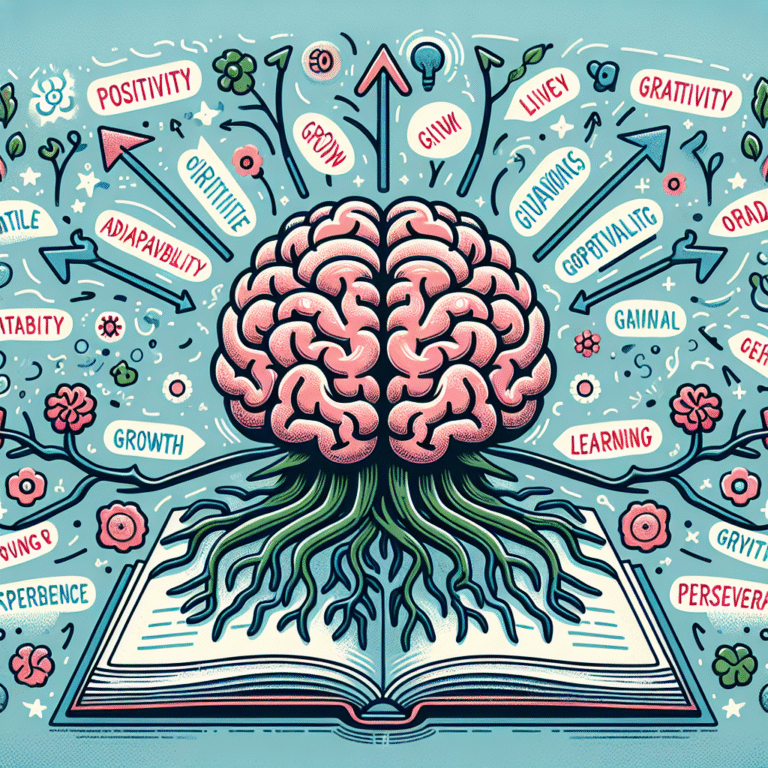
Introduction
In an era marked by rapid technological advancement and increasing pressures on students, the need for mental well-being in educational settings has never been more critical. The rise of mindfulness practices in schools serves as a beacon of hope, guiding students toward emotional resilience and a more balanced academic experience. Through the lens of "Cultivating Calm: The Rise of Mindfulness Practices in Schools," we explore how educators and administrators are harnessing mindful techniques to create peaceful learning environments that foster both academic success and emotional intelligence.
Understanding Mindfulness in Education
What is Mindfulness?
At its core, mindfulness is the practice of being present in the moment, focusing one’s awareness on thoughts and feelings without judgment. In educational settings, this translates to both students and teachers learning to manage stress, improve concentration, and enhance overall well-being.
The Science Behind Mindfulness
Research has shown that mindfulness practices can lead to numerous benefits, including reduced anxiety, improved focus, and better academic performance. Studies indicate that engaging in mindfulness exercises can alter brain structure and function, leading to enhanced emotional regulation and cognitive performance.
Benefits of Mindfulness in Schools
| Benefit | Description |
|---|---|
| Reduced Stress | Helps students manage anxiety and stress. |
| Improved Focus | Enhances attention span and academic performance. |
| Emotional Regulation | Teaches students to understand and manage their emotions. |
| Enhanced Resilience | Prepares students to better cope with challenges. |
The Rise of Mindfulness Practices in Schools
Historical Context
Mindfulness practices have roots in ancient traditions, but their integration into Western education has surged over the past two decades. Initially introduced in stress-reduction programs, these practices have evolved into comprehensive curricula that blend seamlessly with academic standards.
Case Study: The Mindful Schools Program
One exemplary model is the Mindful Schools program, which serves children from various backgrounds. This program teaches mindfulness techniques to young students and provides educators with resources to create a mindful classroom environment. Over the course of the program, participants reported improved emotional well-being and significant reductions in behavioral issues.
Relevance and Impact
The Mindful Schools program highlights the effectiveness of structured mindfulness education. Its success underscores the transformative power of teaching mindfulness from a young age, equipping children with essential life skills.
Real-World Applications
Many schools across the globe have adopted mindfulness practices, implementing various strategies and programs designed to cultivate calm in the classroom. These can include:
- Mindfulness Meditation: Regular sessions where students practice guided meditation.
- Breathing Exercises: Simple techniques to help calm nerves and refocus attention.
- Mindful Movement: Activities like yoga that incorporate physical movement with mindfulness.
Best Practices for Implementing Mindfulness in Schools
Educator Training and Support
The first step to successful implementation lies in training educators. Teachers equipped with a solid understanding of mindfulness principles can effectively facilitate practices among their students.
- Workshops and Seminars: Regular professional development opportunities allow teachers to learn and practice mindfulness techniques.
- Resources and Materials: Providing materials that educators can use in their classrooms ensures that mindfulness practices are easily integrated into existing curricula.
Tailoring Programs to Fit the School Environment
Successful mindfulness programs often consider the unique needs of their student body. Adapting practices to address specific challenges faced by students enhances effectiveness.
| Component | Adaptation Strategy |
|---|---|
| Student Demographics | Tailor content to be culturally relevant. |
| School Environment | Create serene physical spaces for mindfulness practice. |
| Schedule Flexibility | Incorporate mindfulness into daily routines seamlessly. |
Case Study: A School District’s Initiative
In a pioneering initiative, one school district implemented a mindfulness program district-wide. After one academic year, results showed a significant decrease in disciplinary incidents and an increase in student engagement.
Impact Analysis
The district’s approach to fostering mindfulness not only improved student behavior but also created a supportive, empathetic school culture. The results validate the importance of a unified approach across schools to cultivate calm and promote well-being.
Challenges and Solutions
Overcoming Skepticism
Despite the growing interest in mindfulness, not everyone is convinced of its efficacy. Addressing concerns with research-backed insights is crucial for gaining buy-in.
Solution: Share success stories and research findings to demonstrate tangible benefits, thus alleviating skepticism.
Time Constraints
The academic schedule can be packed, leaving little room for new initiatives. Yet, promoting mindfulness doesn’t require extensive time.
Solution: Short, focused mindfulness sessions—even just five minutes—can effectively support mental well-being without overwhelming schedules.
Case Study: Mindfulness Minutes in the Classroom
A pilot program introduced mindfulness sessions during homeroom periods. In a matter of weeks, teachers noted improved focus and participation in students. The program demonstrated that even brief mindfulness interventions can yield significant benefits.
Measuring the Impact of Mindfulness Programs
Understanding Metrics
Effective mindfulness programs require robust evaluation strategies to track progress and outcomes. Schools can assess success through:
- Surveys and Feedback: Gathering input from students, parents, and teachers.
- Behavioral Data: Monitoring attendance and disciplinary actions as indicators of well-being.
- Academic Performance: Comparing grades and test scores pre- and post-implementation.
Case Study: A High School’s Measurement Journey
One high school utilized detailed metrics to evaluate the impact of their mindfulness program. Over two years, they observed improvements in academic performance alongside a dramatic reduction in disciplinary actions.
Lessons Learned
The importance of measurement is clear: making data-driven adjustments to programs enhances their effectiveness and broadens their appeal.
Conclusion
The journey of "Cultivating Calm: The Rise of Mindfulness Practices in Schools" showcases the profound impact these practices can have on the educational landscape. Schools that integrate mindfulness not only enhance academic performance but also create nurturing environments that support mental health.
As educators, parents, and policy-makers recognize the importance of fostering resilience in students, the movement toward mindfulness in schools is poised to grow. Individuals can take action by advocating for mindfulness programs, participating in workshops, and bringing simple mindful practices into daily interactions.
Takeaway
To cultivate calm in our schools, we must continue to share insights, build supportive communities, and prioritize our children’s mental well-being. Mindfulness is not just a trend; it is an essential practice that nurtures the minds and hearts of future generations.
FAQs
1. What is mindfulness in schools?
Mindfulness in schools refers to programs and practices designed to help students focus on the present moment, improving emotional regulation and reducing stress.
2. How does mindfulness benefit students?
Mindfulness has been shown to reduce anxiety, enhance focus, improve emotional resilience, and positively impact academic performance.
3. Can mindfulness be practiced in short sessions?
Yes, even short sessions of mindfulness, such as five-minute breathing exercises, can effectively promote calm and focus.
4. How can schools implement mindfulness practices?
Schools can implement mindfulness through educator training, daily mindfulness sessions, and creating supportive environments conducive to mindful practices.
5. What outcomes have been observed in schools that adopt mindfulness programs?
Schools that adopt mindfulness programs have reported reduced disciplinary incidents, improved academic performance, and a more positive school climate.
By cultivating calm through mindfulness practices, we can empower the next generation to navigate life’s challenges with grace and resilience. Join the movement today and help create a brighter, more mindful future in education!















